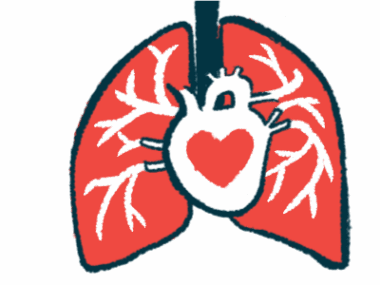Rituximab treatment may help some neurosarcoidosis patients
But immunosuppressive therapy failed most US patients in small study
Written by |

Treatment with rituximab can lead to meaningful improvements for some people with neurosarcoidosis affecting the brain and/or spinal cord — particularly those with hard-to-treat disease and involvement limited to some nerves.
That’s according to a retrospective study of 19 people treated across four U.S. centers, which showed that approximately one-quarter of patients — five in total — responded to rituximab, administered alone or in combination with other immunosuppressive therapies. The majority of the patients, however, did not benefit from rituximab treatment, with most experiencing relapse, the data showed.
“While rituximab failed in most patients with neurosarcoidosis, a small subset may benefit, particularly those with multiple cranial neuropathies, even after failure of other medications,” the researchers wrote. Cranial neuropathies refer to damage to cranial nerves, or those that emerge from the brain and innervate, or help stimulate action in, the head and neck structure.
The study, “Rituximab in pathologically confirmed sarcoidosis affecting the central nervous system: a multi-center retrospective study,” was published in the Journal of Neurology by more than a dozen U.S. researchers.
Sarcoidosis is marked by the formation of granulomas, or clusters of immune cells, that cause inflammation in the body and can damage different organs. When granulomas form in or around the nervous system, the condition is referred to as neurosarcoidosis.
A wide array of potential symptoms and a lack of specific diagnostic markers make neurosarcoidosis difficult to diagnose and treat, especially when the central nervous system, or CNS, which comprises the brain and spinal cord, is involved.
Rituximab often used off-label for treating sarcoidosis
Rituximab, an immunosuppressive therapy that works by killing B-cells, is often used off-label — meaning it’s not an approved treatment — in sarcoidosis. In a few single or multiple case reports, the medication has shown promise for treating neurosarcoidosis. However, large-scale evidence supporting its safety and effectiveness remains limited.
This led a research team to retrospectively review data from CNS neurosarcoidosis patients treated with rituximab at one of four U.S. academic medical centers.
The patients’ median age at the time of their neurosarcoidosis diagnosis was 45, and nearly two-thirds (63.2%) were women. A slightly higher percentage of the patients (68.4%) were Black individuals. In all but one, sarcoidosis also affected regions outside the nervous system.
For most patients, neurosarcoidosis involved the meninges, or the protective membranes that surround and protect the brain and spinal cord. The disease also often affected adjacent structures, including brain tissue and cranial nerves.
No participant showed symptoms of involvement of the peripheral nervous system, which is the network of nerves outside the brain and spinal cord.
Prior to rituximab treatment, these patients had experienced a median of two relapses and tried a median of two therapies. Most (68.5%) were given rituximab as a second-line or later treatment, mainly due to disease progression while on other therapies.
One-quarter of neurosarcoidosis patients saw benefits with treatment
Among the patients, rituximab was started at a median age of 48, when these individuals had lived with neurosarcoidosis for a median of 27 months, or slightly longer than two years. The median treatment duration was 19 months, or about 1.5 years, and most patients tolerated it well.
Most people were also receiving other immunosuppressive treatments, including corticosteroids, methotrexate, or mycophenolate. While corticosteroids are commonly used for treating sarcoidosis, their long-term use is associated with serious side effects, and the goal is to always taper off these medications, without the disease returning.
Overall, the patients were followed for a median of 41 months, or slightly longer than three years. Five (26.3%) responded to rituximab. Among them, four showed clinical improvement — three with partial improvement and one with complete resolution on MRI scans — while one remained stable with no inflammation visible on MRI.
The treatment failed in the remaining 14 patients (73.7%) mainly due to relapse (85.7%) or an inability to reduce their dosage of the corticosteroid prednisone below 10 mg/day (14.3%). Most relapses occurred within six months of the last rituximab dose, even in people with confirmed B-cell depletion.
Most responders (80%) had disease involvement limited to multiple cranial nerves, particularly the optic nerve, which relays signs between the eyes and the brain. At least one of four other cranial nerves was also affected in these patients. All but one of the responders also had sarcoidosis affecting other organs.
[Given these findings,] rituximab … retains its place in the hierarchy of neurosarcoidosis treatment as one potential option for those with disease [resistant] to medications that are more routinely effective.
In contrast, nonresponders typically had more extensive disease involving both brain and spinal cord tissue, meninges, and cranial nerves, most commonly the optic nerve. Two nonresponders developed stroke-like symptoms due to blood vessel inflammation.
All but one responder had received rituximab as a third-line or later therapy. The remaining patient responded to rituximab as a first-line treatment combined with mycophenolate.
Three responders tapered off prednisone entirely, and two continued on low doses. One responder died following a relapse that occurred nine months after discontinuing rituximab. No deaths were reported among nonresponders during the study period.
These findings showed that, although rituximab treatment failed to benefit most patients, it did help a small subset, notably those with damage to multiple cranial nerves, and especially involving the optic nerves. For these patients, benefits were seen “even after failure to respond to other highly-effective medications,” the researchers wrote.
Given these findings, “rituximab … retains its place in the hierarchy of neurosarcoidosis treatment as one potential option for those with disease [resistant] to medications that are more routinely effective,” the researchers concluded.







